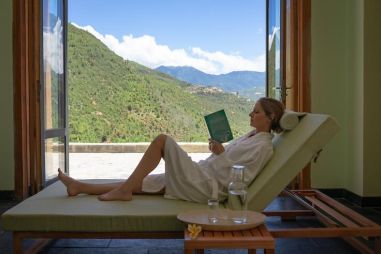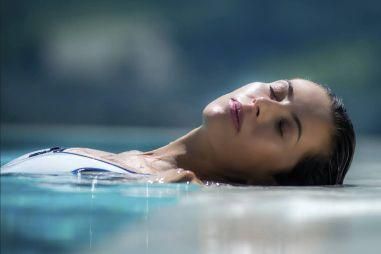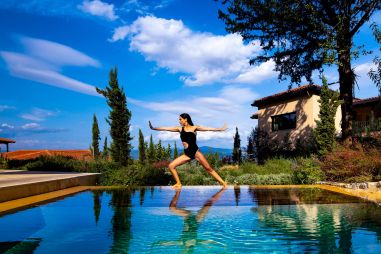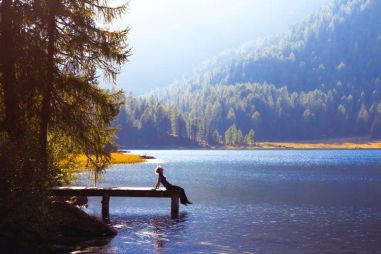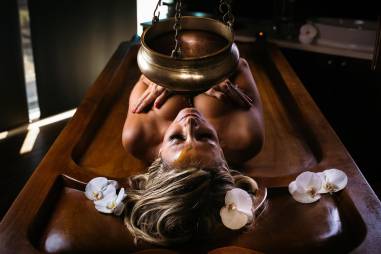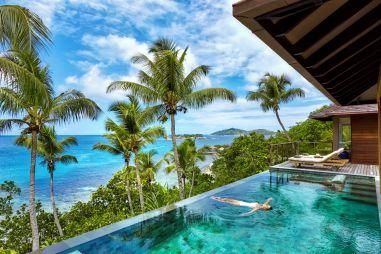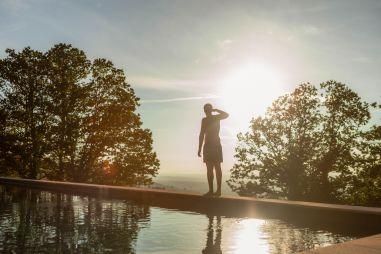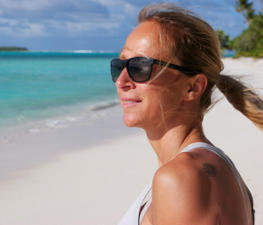Bhutan for Solo Travellers: A safe and restorative wellness destination
Bhutan is one of the safest countries in the world, making it a reliable choice for solo travellers. Many people who travel alone do so to step out of their routine and clear their mind. Bhutan fits that purpose well. The pace is unhurried, there is room to slow down, and visitors are treated with genuine respect. The country is rich in old wisdom, mystique and spirituality, set against a landscape that is striking and untouched. It is still relatively undiscovered, and many people assume it is difficult to travel through. We are happy to show you that the opposite is true. Bhutan is more accessible than most expect. The routes are well organised, and you are looked after throughout the journey. And once you arrive, you understand immediately why the country leaves such a lasting impression.
- Slow travel Bhutan
- Bhutan's spirit: tradition, community and modern vision
- Bhutan’s untouched nature
- Dzongs and Tiger’s Nest: Spiritual Icons of Bhutan
- Why Bhutan works so well for solo travellers (including female!)
- Bhutan Spirit Sanctuar: All-in-one destination
- Bhutanese healing traditions
- This is whaat we love about Bhutan Spirit Sanctuary
- Interested in Bhutan Spirit Sanctuary?
- Good to know before you go to Bhutan
- Getting to Bhutan
- Seasons and weather
- Visa and Development Fee (SDF)
- Safe & Secure
- Festive season in Bhutan
- Click on the link for more information on prices and programmes
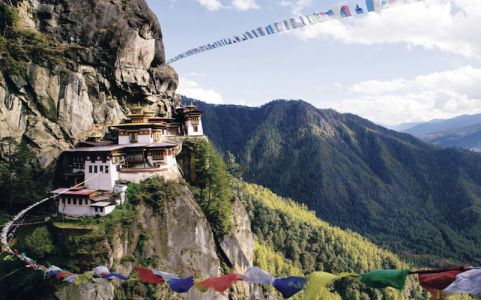
Slow travel Bhutan
Bhutan is a small kingdom nestled between India and China, a true Himalayan gem covered largely in forest and shaped by ancient rituals and wisdom. It is known as the Land of Happiness, a place where spirituality, tradition and simplicity are still part of daily life. Bhutan is not a typical holiday destination; it is more of a spiritual journey. Nowhere else in the Himalayas is Buddhist philosophy woven so deeply into the fabric of society. Travelling here is one of the most exclusive and meaningful experiences in the world.

Bhutan's spirit: tradition, community and modern vision
Traveling to Bhutan means discovering a country with gentle, respectful and warm-hearted people. There is a strong sense of community, and people genuinely look after one another. Many customs are centuries old and still shape daily life. The king guides the country into the modern era with an open outlook, while keeping Bhutan grounded in its heritage. Bhutan is carbon-neutral, and Gross National Happiness is the guiding principle behind government decisions. Both the government and the population actively protect nature and cultural traditions, and tourism is intentionally kept limited. You won't find mass tourism - instead, visitors experience something rare and meaningful. The revenue from tourism is used to support education, healthcare and infrastructure.

Bhutan’s untouched nature
Large parts of Bhutan have been designated as protected nature reserves, allowing many animal and plant species to thrive in ways that are rare elsewhere in the Himalayas. More than 60% of the country is covered in forest, making Bhutan a haven for birdwatchers and travellers seeking untouched nature. The valleys are home to rare wildlife, the mountains are rich in medicinal herbs and the rivers still run freely.

Dzongs and Tiger’s Nest: Spiritual Icons of Bhutan
Across Bhutan you’ll find impressive dzongs — fortified Buddhist complexes that serve both religious and administrative purposes. They are the cultural and spiritual centres of each valley, deeply woven into daily Bhutanese life. Every district has its own dzong, each with distinctive architecture and long-held traditions. And then there is Tiger’s Nest near Paro, one of the most striking sights in the world. Perched high on a sheer cliff, the monastery appears to hover above the valley. The hike to reach it is demanding, but the experience and the views are unmatched.

Why Bhutan works so well for solo travellers (including female!)
Bhutan feels respectful and safe. People are warm but never intrusive. You are given space, yet you never feel alone. You notice it in the way they greet you or offer a quiet, genuine smile. Bhutan encourages you to slow down. There is no need to rush from one highlight to the next. A walk in nature, a visit to a monastery or a cup of tea in a small village can easily fill the day. In recent years, Bhutan has seen a clear rise in women travelling alone, across all ages and nationalities. It is one of the safest countries in Asia. Alongside a stay at the health retreat Bhutan Spirit Sanctuary (described below), we recommend exploring the country on an individual journey with your own driver and English-speaking guide. This allows you to visit several places at your own pace, or even stay with local families.
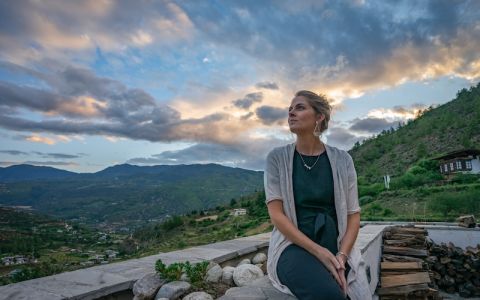
Bhutan Spirit Sanctuar: All-in-one destination
Bhutan Spirit Sanctuary sits in the quiet Neyphu Valley and follows a fully inclusive wellbeing concept. All meals and drinks are included, along with a wide range of wellness treatments, yoga, meditation, Eastern therapies and activities such as Bhutanese cooking, pottery and traditional sports. It’s a comfortable base for solo travellers or a relaxing starting point for a longer journey through Bhutan. Guests come as couples or solo travellers, with a shared community table in the restaurant for those who would like to meet like-minded people. The daily schedule is varied, offering workshops, holistic experiences and excursions for those seeking both rest and discovery.
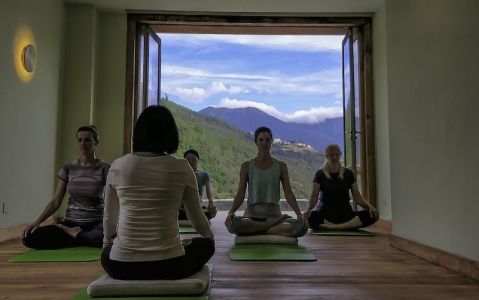
Bhutanese healing traditions
Bhutan Spirit Sanctuary works from the Restful Mind philosophy 'To have a restful mind is to relax in your nature'. Two traditional Bhutanese doctors live on-site and design a personal wellbeing plan for each guest. The spa offers Ku Nye massage, Moxibustion and Numtsug warm-oil compressions, alongside a sauna, steam room, hot-stone baths, a heated indoor pool, fitness, and dedicated yoga and meditation spaces. Creative sessions are available in the ceramics and art studio. Set in the peaceful Neyphu Valley, the Sanctuary is an ideal base for solo travellers who want to explore Bhutan at a calm pace. The retreat is part of the SLH Wellbeing Collection, recognising hotels that support genuine physical, mental and emotional health. Bhutan Spirit Sanctuary meets these standards through its deep integration of Bhutanese healing traditions. You can join guided meditations, yoga, holistic treatments, art sessions, or simply walk through the surrounding hills and enjoy the quiet of the valley.
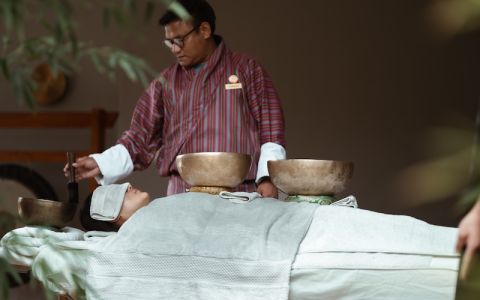
This is whaat we love about Bhutan Spirit Sanctuary
- Traditional Bhutanese treatments such as Ku Nye (massage) and Numtsug (warm oil compression)
- Bhutan is known as the land of medicinal herbs and is a rich source of traditional healing practices
- The hike to Tiger’s Nest, the centuries-old monastery built against a steep cliff. It’s a demanding walk with striking views over the Paro Valley
Interested in Bhutan Spirit Sanctuary?
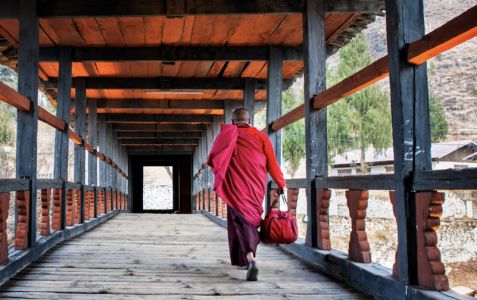
Good to know before you go to Bhutan
Below you will find the key practical information for your journey to Bhutan, including travel logistics, safety, transportation, and required documents.
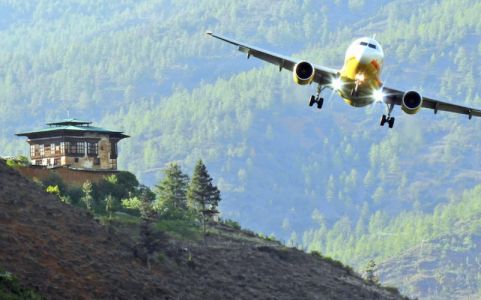
Getting to Bhutan
Bhutan has one international airport: Paro (about a fifteen-minute drive from Bhutan Spirit Sanctuary). The airlines Drukair and Bhutan Airlines fly to Paro from Bangkok, Delhi, Kathmandu, Mumbai, Kolkata and Singapore. Please note that due to changing weather conditions, and because Paro airport can operate only during daylight hours, delays may occur. It is advisable to allow ample transfer time for connecting flights.

Seasons and weather
Bhutan is a year-round destination. In spring, nature is in bloom and the mountain slopes are covered with flowers. Temperatures are mild, making it comfortable hiking weather. In summer, the country is lush and green. There may be rain, but this is when Bhutan shows its purest side: water-filled rice terraces, fresh air, and quiet trails. Autumn is the main festival season. (Paro is an exception; its festival takes place in April, just after Easter.) The skies are often clear, and this period attracts travellers who want to combine culture and nature. Winter is calm. The air is cool and dry, the light soft. Ideal for those seeking silence and a slower pace while travelling through the valleys. One note on the weather: due to climate change, the monsoon began in September last year instead of July.
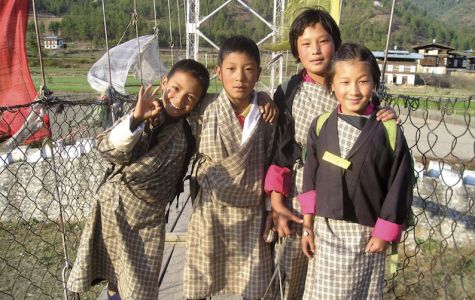
Visa and Development Fee (SDF)
There is no annual cap on the number of tourists allowed into Bhutan. That idea circulates often, but it is not true. You do need a visa, which can be arranged easily online. A passport valid for at least six months after departing Bhutan is required, and it should have enough blank pages. The visa fee is usually included when you book a complete trip. In addition, Bhutan charges a Sustainable Development Fee (SDF). This fee supports education, healthcare and environmental protection. It ensures that tourism contributes directly to local communities and helps keep the country clean and well-preserved for the future.
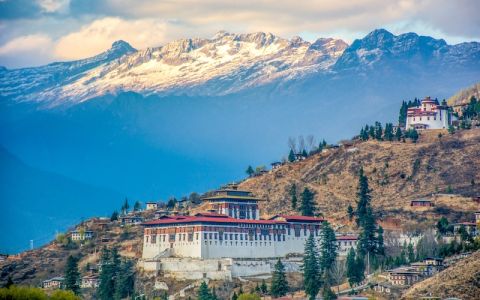
Safe & Secure
Bhutan is known as one of the safest countries in the world, which is reassuring if you are travelling alone. If you plan to tour the country, you will have the same driver and guide throughout your journey. They know the country well and make sure you feel comfortable everywhere. If you would like to stay somewhere longer, skip a stop or add something extra, that is possible. You travel at your own pace, with room for spontaneous moments.
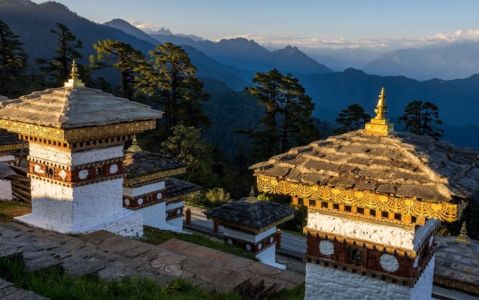
Festive season in Bhutan
In December 2025, airlines offer discounted flights to Bhutan. A good moment to travel: the weather is pleasant and hotel rates are lower than in the high season. The high season falls in spring (March / April / May) and autumn (September / October / November). Bhutan Spirit Sanctuary offers special holiday programmes on 24 and 31 December, and hotel guests can join these at no extra cost.
Click on the link for more information on prices and programmes
Or reach out to one of our wellness travel experts, who will be happy to arrange a tailored journey through Bhutan for you.

About Marleen
This blog is written by Marleen, founder of PureandCure.com (established in 2005). She travels around the world in search of the best Health & Wellbeing Hotels, Spas and Retreats and shares her insights, experiences and observations through her blogs.

 EN
EN NL
NL BE
BE